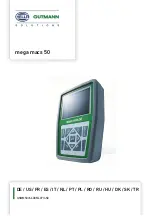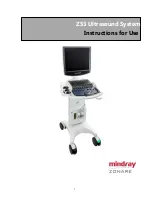
Liftkar SAL I 7
2.4 CONTROL BOX
1: Indicator light - 2: On/Off/Ascend/ Descend button (P) - 3:
Speed switch
2.4.1 BUTTON (P) FOR ASCENDING / DESCENDING
Briefly press the push button to switch the LIFTKAR SAL to ascent mode or descent mode. See section
4.1
.
If the button is pressed for more than 3 seconds, the LIFTKAR SAL will switch off.
2.4.2 INDICATOR LIGHT
Shines green: The LIFTKAR SAL is in ascent mode. (In the ascent mode the push button Q in the handle bar
is active. The lifting mechanism operates when the push button Q is pressed and stops when released (refer
also chapter
4.1
)
Flashing green: The LIFTKAR is in descent mode. (The push button Q is not active now – refer also to
chapter
4.2
)
Constantly red: The LIFTKAR is in descent mode and the support wheels move (fast) to the descend position
(takes a max. of 0.5 seconds – refer also to chapter
4.2
)
Flashing red: The LIFTKAR is overloaded. (Flashes for 3 seconds and goes out – see also chapter
4.3.3
)
Alternating red and green: the battery pack is running low and urgently needs to be recharged. The
stairclimber will certainly manage another flight of stairs, but it is recommended that you move down stairs
and either change the battery pack or recharge it with the quick charger supplied.
2.4.3 BEEP FEATURE
This is a people warning feature for transports in public areas.
How to activate the Beep feature: Turn on the device and hold down the On-/Off- /Ascend-/Descend – button
(P) for about 30 seconds until you can hear a beep signal. Now the recurring beep signal is available while you
are driving with the SAL.
How to disable the Beep feature: Turn on the device and hold down the On-/Off- /Ascend-/Descend – button
(P) for about 30 seconds until you can hear a beep signal. Afterwards you can drive without the recurring beep
signal.
2.4.4 SPEED SWITCH
Use the speed switch to select either high or low speed – this can only be used in ascent mode. (In descent
mode the descending speed is permanently set so that optimum braking will always be secured – refer also
chapter
4.2
)
Low speed is advisable for: training, heavy loads and in awkward locations.





































